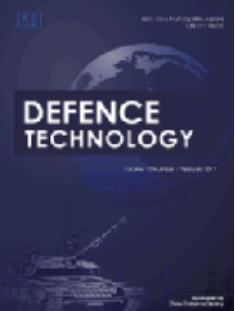Proportional effects of RDX/Al mixtures on dust explosion characteristics, flame behavior, and explosion mechanism
IF 5.9
Q1 ENGINEERING, MULTIDISCIPLINARY
引用次数: 0
Abstract
RDX/Al mixtures are widely utilized in energetic materials, yet their hybrid dust generated during production and application poses potential explosion hazards. Moreover, the synergistic explosion mechanisms remain poorly understood, particularly at varying dust concentrations. This study systematically investigates the effects of different aluminum powder mass percentages and dust concentrations (300 g/m3, 600 g/m3, 900 g/m3) on RDX dust explosion severity, flame propagation behavior, and gaseous products. The results indicate that the maximum explosion pressure peaks at 35% RDX, 65% RDX, and 80% RDX at 300 g/m3, 600 g/m3, and 900 g/m3, respectively. Concurrently, the time for the flame to propagate to the wall (t1) reaches minimum values of 34.8 ms, 25.66 ms, and 23.93 ms. The maximum rate of pressure rise is observed for pure RDX at 900 g/m3. Aluminum powder enhances flame propagation velocity and combustion duration, as validated by the flame propagation system. Overall, the concentrations of carbon oxides (CO+CO2) decrease significantly with increasing aluminum mass percentage. At 20% RDX, the concentrations decreased by 51.64%, 72.31%, and 79.55% compared to pure RDX at 300 g/m3, 600 g/m3, and 900 g/m3, respectively. Notably, N2O concentration only at 300 g/m3 showed such a trend. It rises first and then falls at 35% RDX at 600 g/m3 and 900 g/m3. These findings elucidate the synergistic explosion mechanisms and provide critical guidelines for safe production and handling.
RDX/Al混合物对粉尘爆炸特性、火焰行为和爆炸机理的比例影响
RDX/Al混合物广泛应用于含能材料中,但在生产和使用过程中产生的混合粉尘具有潜在的爆炸危险。此外,协同爆炸机制仍然知之甚少,特别是在不同的粉尘浓度。本研究系统研究了不同铝粉质量百分比和粉尘浓度(300 g/m3、600 g/m3、900 g/m3)对RDX粉尘爆炸严重程度、火焰传播行为和气体产物的影响。结果表明,在300 g/m3、600 g/m3和900 g/m3下,35% RDX、65% RDX和80% RDX的爆炸压力峰值分别为35%、65%和80%。同时,火焰传播到壁面的时间(t1)达到最小值34.8 ms, 25.66 ms和23.93 ms。观察到纯RDX的最大压力上升速率为900 g/m3。通过火焰传播系统验证了铝粉能提高火焰的传播速度和燃烧持续时间。总体而言,随着铝质量百分比的增加,碳氧化物(CO+CO2)浓度显著降低。当RDX浓度为20%时,与浓度为300 g/m3、600 g/m3和900 g/m3的纯RDX相比,浓度分别下降了51.64%、72.31%和79.55%。值得注意的是,N2O浓度只有在300 g/m3时才有这种趋势。在600 g/m3和900 g/m3时,以35% RDX先上升后下降。这些发现阐明了协同爆炸机制,并为安全生产和处理提供了重要指导。
本文章由计算机程序翻译,如有差异,请以英文原文为准。
求助全文
约1分钟内获得全文
求助全文
来源期刊

Defence Technology(防务技术)
Mechanical Engineering, Control and Systems Engineering, Industrial and Manufacturing Engineering
CiteScore
8.70
自引率
0.00%
发文量
728
审稿时长
25 days
期刊介绍:
Defence Technology, a peer reviewed journal, is published monthly and aims to become the best international academic exchange platform for the research related to defence technology. It publishes original research papers having direct bearing on defence, with a balanced coverage on analytical, experimental, numerical simulation and applied investigations. It covers various disciplines of science, technology and engineering.
 求助内容:
求助内容: 应助结果提醒方式:
应助结果提醒方式:


